The BMW R63 was the top of BMWs range in 1928; they had never offered a 750cc OHV motorcycle before. The R63 was an expensive machine when new, and cost about the same as a Brough Superior in the UK, due to import taxes, and I doubt many – if any at all – were imported to the USA. They remain coveted and expensive machines today, as the technical specification is impressive; 750cc OHV motorcycles for the street were rare in 1928, and none were offered in the USA at the time, and only a handful of luxury or super-sports machines in the UK or Europe were available with such a motor. The styling is another contributing factor to their continued demand; with spare, light lines, the ‘flat tank’ nestling between the frame rails, and the sporty motor, the R63 is a true Bauhaus beauty. BMW changed course in 1930 with pressed-steel frames that were also lovely, and gave an Art Deco flair to their lineup, but the R63 has a very different vibe, appearing much lighter and more sporting than its descendants.The Vintagent Road Tests come straight from the saddle of the world’s rarest motorcycles. Catch the Road Test series here.
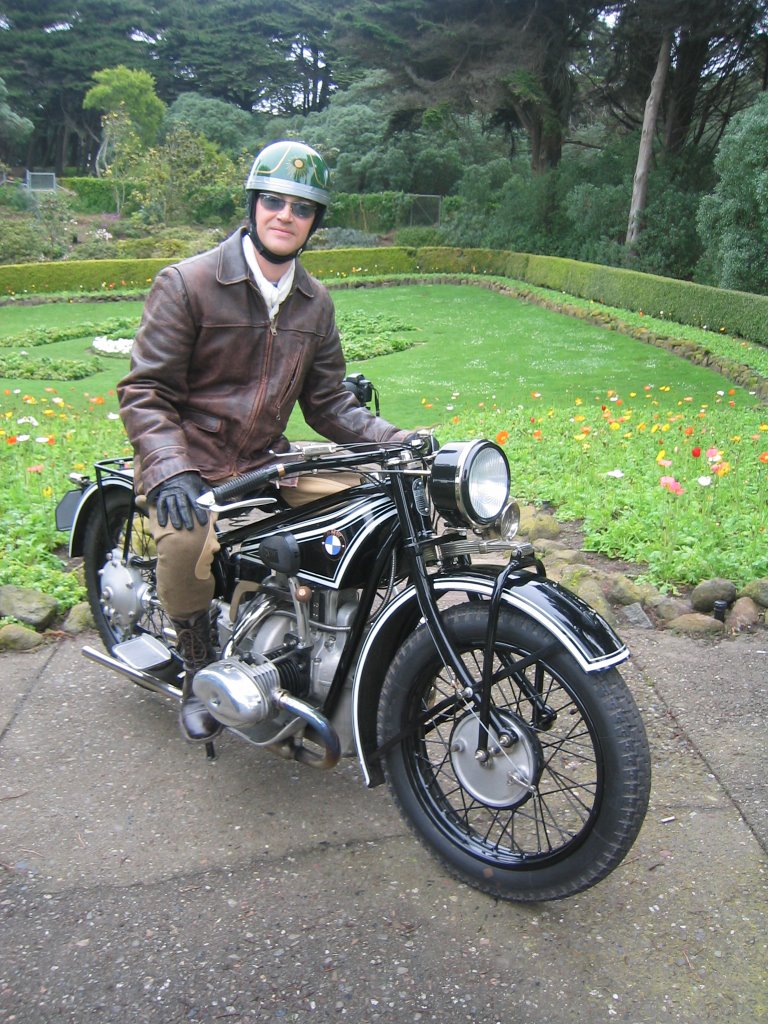
I came across the R63 after selling a Brough Superior SS100 (and several other machines) in order to buy a house in San Francisco in 2001. The SS100 left me with enough cash to buy a restored 1928 BMW R63, which looked amazing via photos. The bike was restored in Germany, but was clearly not re-built for actual riding, only for display. I’ve never been so disappointed in a purchase! The mechanical noise was awful; it sounded like a cement mixer, handled like a cart, had terrible brakes which dragged and howled while riding, and a gearbox which whined like a dog with attachment issues. I returned it to the vendor, who had warned me I should give it a test ride before buying, but he was 3000 miles away, so I rolled the dice. He re-sold it immediately, such is demand for even poorly restored R63s.
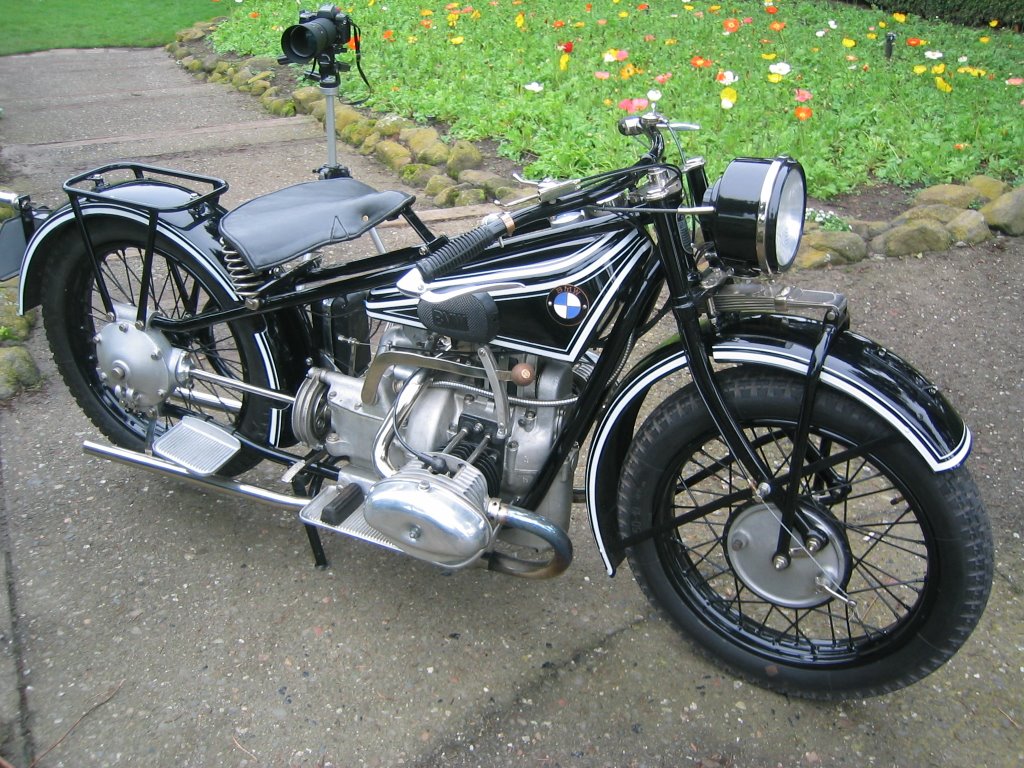
Of course, my R63 wasn’t representative of BMWs from the 1920’s. I’ve since ridden some real peaches from the era (see this Road Test of an R16)…but after asking around for opinions on the R63, I found that although mine was mechanically suspect, they’re all slightly crude compared to the later models I was more familiar with, starting with the R5 in 1936. The chassis specs are interesting; up front is a leaf-spring front fork with a generous 7″ brake, although the rear brake is via a finned clamp over the shaft drive coupling, and does little good, especially when wet. The gearbox has three speeds, and shifting can be graunchy, but that’s a problem BMW didn’t solve until the turn of the Century. The 24hp motor has plenty of torque, as you might expect, and spun up well to a satisfying if not thrilling top speed of around 75mph. If you think I’m expecting too much for the period, my 1928 AJS K7 350cc had the same top speed, my 1928 Sunbeam Model 90TT would romp to over 90mph, and my tuned ’26 Norton Model 18 was timed at 96mph. The handling with the leaf-sprung front fork was not up to British standards of the era, but probably equivalent of an American machine of the era. Which is why the dominant racing machines of the 1920s were Nortons and Sunbeams, which handle superbly and are much lighter, quicker motorcycles. In sum, the R63 is not a road-burner, but a beautiful grand touring machine, which is a fine thing to be.
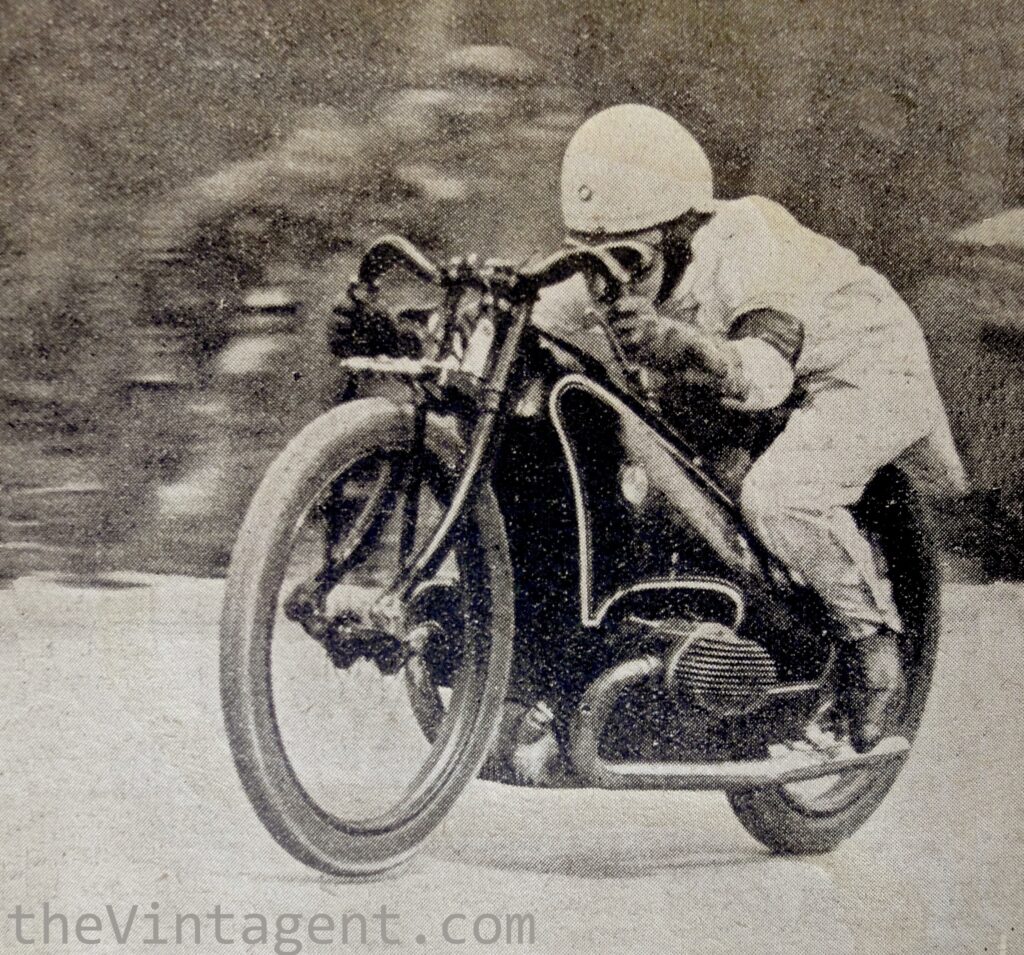
Would I give another R63 a try in my stable? Of course! What a beauty. I met a mechanic/restorer in Germany who regularly rides his R63 from Munich to Turkey for his summer holidays; now that’s a relationship worth envying. And it should be remembered that the R63 formed the foundation of BMW’s WR750 racers and record-breakers, that would record 135mph with a supercharger and streamlined bodywork. A very different animal indeed…


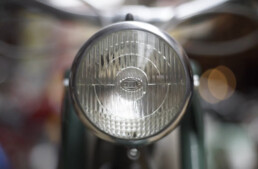
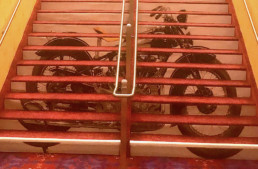
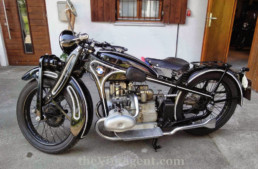
Paul, thank you for the illuminating article on the R63. At one point I think you mean to have a link to a road test, but there is no link. It’s at: “see this Road Test of an R16”
I thought BMWs were not to be criticized as less than perfect, much less in favor of contemporary British machines, but here we are. You taught me something.
All best,
David in Fort Lauderdale
Thanks David! Here’s the link: https://thevintagent.com/2017/12/11/road-test-1929-bmw-r16/
I’ve added it to the article.
BMWs are their own animal certainly, and there’s a reason their bikes only did well in domestic competition for the first couple of decades, despite their pioneering work with superchargers. It took a big push and a large investment from the NSKK to transform the blown R63 record breaker into the RS255 TT winner. That is a marvelous machine.
Do people dislike apples to apples comparisons? Having ridden/owned quite a few 1928 machines, it was an easy comparison to make…
all the best, Paul
Hi Paul
Think the R63 had nothing at all to do with anything related to “Racing”, it used to be a sturdy troublefree touring bike.
Please have a look at my friends restored R63, see
http://www.pfeffer.ch, choose ‘Motorrad’ from the left hand yellow navigation bar and klick on ‘Klassik’
The R63 restorer is a collector of old bikes and cars, a member of the Swiss ‘Albis Racing Team’ and a school teacher.
Regards
Robert Pfeffer
Bulach/Switzerland
Robert, thanks for your comment, but I’m afraid you’re mistaken. R63’s were regularly used by the factory and private owners for racing; BMW even supercharged them for road racing and record breaking, which must have been terrifying! I’ll make a post about early BMW racing efforts.
Hi Paul
Of course you’re right. Almost anything was raced in the crazy twenties. And I forgot Ernst Henne. I think it was he who asked to have it supercharged for record breaking.
Regards
Robert
Hi Paul.
I read with a chuckle your comments on your R63 Experience. I have a nicely restored R63. I have never had it running, I am close. Had to do the usual things, coat the tank fix a lever, things like that. It has a weak spark and when I push it the diff has a suspicious noise. After reading your comments, perhaps I should just keep it as a static display.
I also have a Brough. 1936 SS80, my favorite bike to ride. I rode it to Legends a few times (about 350 miles up the coast) It handles great, keeps up with modern traffic and never lets me down.
Doug McKenzie
Re: Your interest in women motorcyclists. I have a photograph of a relative of mine who lived in Bradford, England. The photo was taken early last century. She sits on a motorcycle with sidecar. She was known as the first woman to ride a motorcycle in Bradford. Her name was Olive.
When my wife and I were honeymooning in England in 1990, I attempted to try and find out who my grandfather’s father might have been. He was born to an unwed mother and raised by two spinster Aunts. He took his mother’s last name and was Ernist Priestley. If he knew who his father was, he never spoke of it.
I was introduced to another relative who was 95 years old and still working as a soliciter (lawyer) in Bradford. When I asked him if he knew my grandfather, he said he knew “of him”. But he said that the person I should have spoken to when she was alive would have been a woman named Olive who rode a motorcycle with sidecar all over Bradford, was quite gegarious, and knew everything about everyone in the family. I wish I could have met her. She looks quite wild on the motorcycle.
Rod
Hi Paul
I actually own your old R63. Your description of it was spot on! It’s getting sorted out issue by issue. I never tire of looking at it, so that keeps me inspired. So many parts are available now that were probably not available when the machine was cosmetically restored. Packages from Germany and Poland arrive regularly on my front doorstep. This example might be considered one of the better ones when I’m done, at least that’s what I’m gunning for. Love the Vintagent. Love your work.